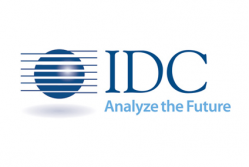The Europe, Middle East, and Africa (EMEA) smartphone market recorded its weakest performance in six years in 2020 due to the COVID-19 crisis, according to International Data Corporation (IDC). IDC’s Worldwide Quarterly Mobile Phone Tracker reports the EMEA market volume contracted 4.2% in units year on year, dropping to a total of 345.2 million.
The market’s value likewise declined, by 4.6% year on year, to around $110 billion.
In Europe, the Tracker found that the market suffered a 4.9% slump year on year in unit terms, falling to 195.2 million. The market lost 3.0% in value year on year, declining to $82.4 million.
“If you just looked at the topline numbers, you might think it was a typical year with a bit of an economic wobble, not one with a pandemic and months of national lockdowns, leading to a yawning economic downturn,” says Zdenek Krouzel, program manager at IDC EMEA.
“Across Europe, consumers switched quickly to buying online when phone shops closed in spring 2020,” says IDC EMEA Research Manager Marta Pinto. “The phone business did not get the same boost from home working as the PC market, but clearly consumers were valuing their phones more as they coped with the new stresses of living mainly within the same four walls.”
IDC’s Tracker reports that competition brought the average, before-tax retail price of an Android smartphone down to $278 in Europe in 2020. This marked an 8.5% year-on-year price drop. Apple, however, saw its average European smartphone sales price increase to $894. Apple recorded a strong 2020, finishing with its best Q4 ever on the European market.
IDC anticipates the European smartphone market will grow marginally in units and value in 2021. The Android market will remain competitive as brands vie to capture part of the share previously held by Huawei, which has declined due to U.S. sanctions.
Samsung remains the undisputed leader of the European Android market. Xiaomi has captured some of Huawei’s share, while rival Chinese brands OPPO and vivo have, so far, made only moderate advances.
The COVID-19 pandemic stunted the expected growth of Android 5G devices in Europe in 2020, with 5G-capable phones capturing just one-tenth of the total smartphone volume. Apple’s decision to make all iPhone 12 devices 5G-capable boosted the market in Q4. IDC expects as many as one in four smartphones shipped to Europe in 2021 to be 5G-capable.
Top 5 EMEA Smartphone Companies, Shipments, Market Share, and Year-on-Year Growth,
2020 (Shipments in Millions of Units)
|
Company |
2020 Shipments |
2020 Market Share |
2019 Shipments |
2019 Market Share |
YoY Growth |
|
Samsung |
99.7 |
28.9% |
118.5 |
32.9% |
-15.9% |
|
Apple |
53.2 |
15.4% |
48.3 |
13.4% |
10.0% |
|
Transsion |
47.0 |
13.6% |
35.9 |
10.0% |
31.1% |
|
Xiaomi |
41.1 |
11.9% |
24.7 |
6.8% |
66.4% |
|
Huawei |
44.0 |
12.7% |
68.5 |
19.0% |
-35.8% |
|
Others |
60.2 |
17.5% |
64.5 |
17.9% |
-6.7% |
|
Total |
345.2 |
100% |
360.4 |
100% |
-4.2% |
Source: IDC Worldwide Quarterly Mobile Phone Tracker, February 2021 (figures have been rounded)
IDC’s Worldwide Quarterly Mobile Phone Tracker fills the demand for detailed and timely information on the total mobile phone and smartphone markets for handset vendors, software developers, service providers, component suppliers, and investors. It provides insightful analysis through quarterly market share data by region. The tracker delivers a quarterly web database that details the performance of the market’s individual players and answers important product-planning and product-positioning questions.

